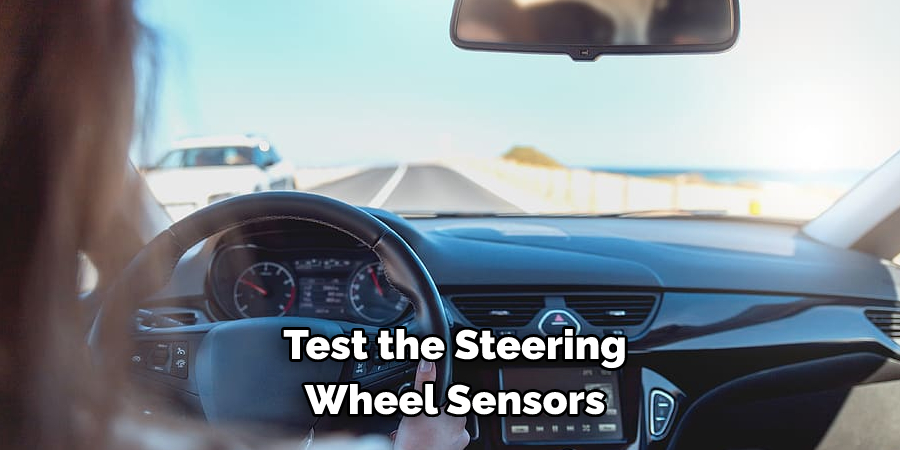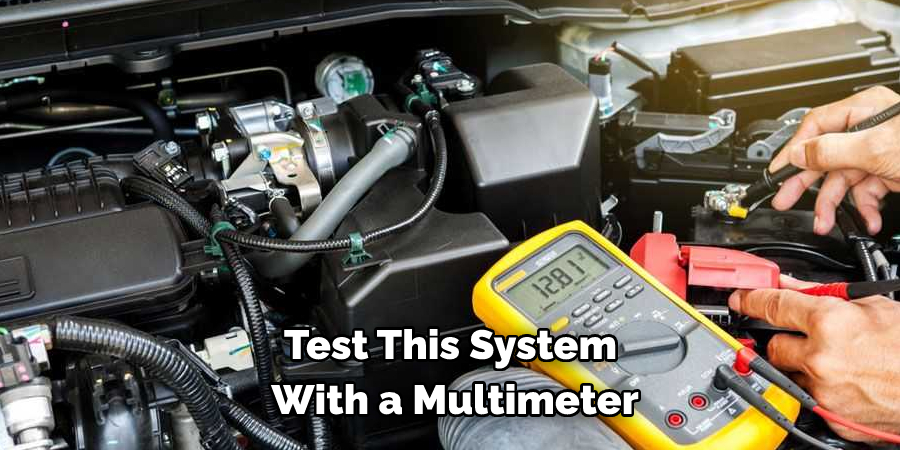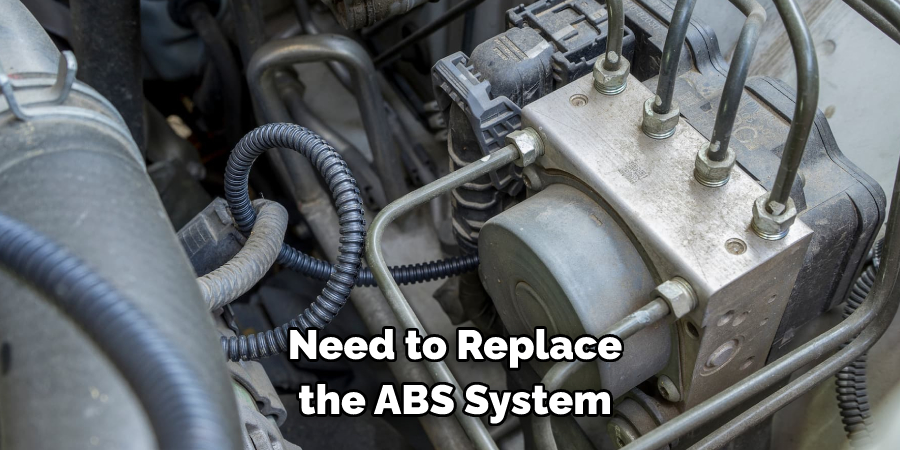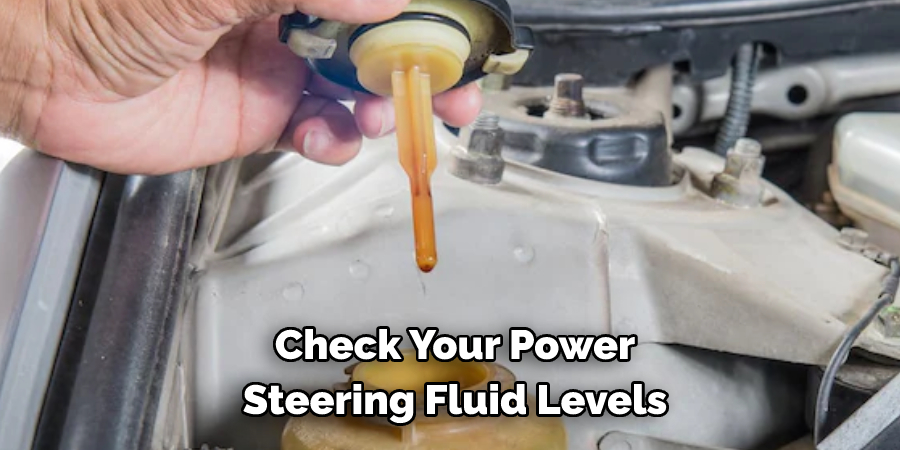Are you having difficulty steering your car and noticing a “Steering Assist is Reduced, Drive With Care” message on the dashboard? If so, there could be several underlying problems. We’ll cover what this warning means and provide step-by-step instructions for resolving the issue.
Whether or not you have technical expertise, it’s possible to diagnose what’s causing this error message and address any needed repairs. Keep reading to learn more about how to fix steering assist is reduced drive with care!

11 Step-by-step Guides on How to Fix Steering Assist is Reduced Drive With Care
Step 1: Check Your Vehicle’s Electrical System
The first step in diagnosing the problem is to inspect your vehicle’s electrical system. Make sure that all of the wiring and connectors are in good condition. If something looks out of place or there is obviously damage, you may need to replace the wiring or connectors. If this is the case, you should consult a professional mechanic.
Step 2: Check the Steering Wheel and Column
Next, take a look at your steering wheel and column. Make sure everything is tight and that the wheel is securely attached. Inspect the column for any signs of wear or damage. If you find something suspicious, it may be necessary to replace the steering wheel or column. But, again, it’s best to consult a professional mechanic.
Step 3: Test the Steering Wheel Sensors
Your vehicle likely has sensors located on either side of the steering wheel. These are responsible for providing feedback to your computer system so that it knows how much force should be applied to assist in turning the vehicle. Test these sensors with a multimeter to make sure they’re receiving a signal from your vehicle. If they’re not, you may need to replace them.

Step 4: Check Your Power Steering Fluid
Low levels of power steering fluid can also cause this issue. To check yours, locate your power steering fluid reservoir, remove the cap, and inspect the levels. If they’re low, top them up with fresh power steering fluid. If the levels are low and you can’t find a leak, you may need to replace your power steering pump. Although, again, we recommend consulting a professional mechanic.
Step 5: Check the Power Steering Pump
The power steering pump is responsible for supplying pressure to your vehicle’s power steering system. Test it with a multimeter to make sure that it is functioning properly. It’s important to note that if your power steering pump is malfunctioning, you’ll need to replace it. If this is the case, it’s best to consult a professional mechanic. But it is possible to do it yourself if you have the necessary tools.
Step 6: Inspect Your Vehicle’s Drive Belt System
Inspect your vehicle’s drive belt system to make sure that all the belts are in good condition and not worn or cracked. Any damaged belts will need to be replaced immediately. But, if you’re unsure of what to do, it’s best to consult a professional. However, if the belts are in good condition, move on to the next step.
Step 7: Check All Wheel Bearings & Suspension
Make sure all wheel bearings and suspension components are in good condition. Listen for any strange noises coming from the wheels when you turn your car. If you hear anything suspicious, it’s a sign that something is wrong and needs to be repaired or replaced. But, again, it’s best to consult a professional mechanic.
Step 8: Check Your Vehicle’s Stability Control System
Your vehicle likely has an electronic stability control system that helps keep your vehicle balanced while turning. Test this system with a multimeter to make sure it is functioning properly. If it isn’t, you’ll need to replace the system. But, once again, it’s best to consult a professional mechanic. But, if the system is functioning properly, move on to the next step.

Step 9: Inspect Your Vehicle’s Steering Components
Inspect your vehicle’s steering components such as the tie rods, ball joints, and rack-and-pinion unit for any signs of wear or damage. These components are responsible for providing feedback to the steering system so that it knows how much force should be applied. If any of these components are worn or damaged, they will need to be replaced.
Step 10: Check Your Tire Pressure
Tire pressure can also affect your vehicle’s steering assist. Make sure all tires are properly inflated and check the sidewalls for any signs of bulging or wear. It’s important to make sure that all four tires are the same size and have the same tread pattern. But, if you’re unsure of what to do, it’s best to consult a professional mechanic.
Step 11: Inspect Your Vehicle’s ABS System
The Anti-lock Braking System (ABS) is responsible for preventing your wheels from locking up when braking hard. Inspect this system to make sure everything is functioning properly and no error codes have been logged in the computer system. If there are any errors, you may need to replace the ABS system. Always consult a professional mechanic for this.
By following these steps on how to fix steering assist is reduced drive with care, you should be able to diagnose and fix the issue of reduced steering assist. If any of the components need to be replaced, take your car to a qualified mechanic for help. With proper maintenance and inspection, you can keep the vehicle in optimal condition and minimize the risk of any further problems with your power steering system. Good luck!

Do You Need to Hire a Professional?
If you are still having difficulty fixing the issue of reduced steering assist on your own, it may be time to seek out a professional. A qualified mechanic can help diagnose the problem and identify any components that need to be replaced or repaired. They will also be able to provide advice on the best course of action for keeping your vehicle running smoothly. Don’t forget to follow all safety precautions when working on your vehicle. Thanks for reading!
How Much Will It Cost?
The cost of the repairs or replacements needed to fix the issue of reduced steering assist will depend on the extent of the damage and what components need to be replaced. In general, it’s wise to have a qualified mechanic inspect your vehicle before any repairs are made. They will be able to provide an accurate estimate of the cost of parts and labor. Keep in mind that preventive maintenance is always less expensive than repairs so make sure you keep up with regular maintenance checks on your vehicle.
Frequently Asked Questions
Q: How Do I Know if My Steering Assist is Reduced?
A: If you feel like your vehicle is harder to steer than normal, then this may be a sign that your steering assist is reduced. Other signs include a strange noise coming from the front wheels when turning and an increase in fuel consumption.
Q: What Components Need to Be Replaced if My Steering Assist is Reduced?
A: Depending on the cause of the problem, you may need to replace the drive belt system, wheel bearings or suspension components, electronic stability control system, tie rods, ball joints, rack-and-pinion unit, tires or ABS system. A qualified mechanic will be able to identify which parts are causing the issue and recommend replacements.
Q: How Can I Prevent My Steering Assist from Being Reduced?
A: Regular maintenance and inspection of your vehicle can help prevent reduced steering assist. Make sure to check the drive belt system, wheel bearings and suspension components as well as the electronic stability control system, tire pressure, ABS system, tie rods, ball joints, and rack-and-pinion unit. If any of these parts need to be replaced or repaired, get professional help immediately. This will ensure that your vehicle is running smoothly and safely.
Q: Can I Do the Repairs Myself?
A: While some of the repairs may be able to be done on your own, it’s best to consult with a qualified mechanic if you are not sure how to proceed. They will be able to identify which parts need replacing and provide advice on the best course of action for fixing the issue. Don’t forget to follow all safety precautions when working on your vehicle.

Conclusion
Thanks for reading this article on how to fix steering assist is reduced drive with care. Taking the time to recognize and understand what may cause “Steering Assist is Reduced Drive With Care” in your car can save you from a dangerous situation or costly repairs. In most cases, simply checking your power steering fluid levels, or having it serviced, can solve the issue quickly and easily. While this type of warning light should be taken seriously, depending on the underlying cause, it can usually be addressed without great difficulty.
Keeping an eye on odd symptoms or errors with your power steering system can help lessen the likelihood of major damage occurring over time. Don’t be afraid to ask for help if you don’t feel comfortable doing any service work yourself. Taking care of potential auto issues not only keeps you safe but also prevents future problems and costly repairs – so drive with care!
